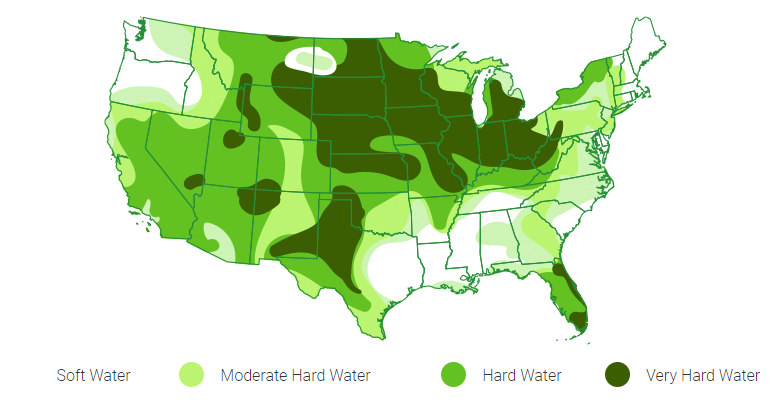Get the hard facts about hard water
Get the hard facts about hard water
USGS 2018 & EcoPure 2023

Soft water
The water in your area contains low level of calcium, magnesium and other dissolved materials. You probably don’t suffer from hard water stains in your home. Lime-A-Way® is also great for other stains, such as rust stains that you may experience in other areas of your home.
Moderate hard water
The water in your area contains moderately high levels of calcium, magnesium and other dissolved minerals. While you might not notice right away, hard water stains and deposits will build up over time.
Hard water
The water in your area contains high level of calcium, magnesium and other dissolved materials. Consequently there is a good chance that you are experiencing symptoms of the effects of hard water. Below is a simple checklist to help you spot them.
Very hard water
The water in your area contains very high levels of calcium, magnesium and other dissolved minerals. Consequently, there is a very high chance that your home is experiencing symptoms of the effects of hard water.
The effects of hard water
Since so much water is used in the bathroom, it's usually the best place to see the effects of hard water.

Look for:
- Little or no lather when using soap or shampoo. Hard water prevents soap and detergents from lathering.
- Unattractive white or brown, crusty stains or rings in bathtubs, sinks, shower areas, toilet bowls and around the foundations of taps and fixtures.
- A thin film of rough powder on glass, plastic and porcelain surfaces (like shower doors, tiles and curtains).
- Clogged or slow-flowing showerheads and sink faucets. This is caused by the buildup of hard water deposits, also known as limescale.
- Red-tinted water or slime. This is usually caused by water with a high iron content.
- Blue-green rust on brass or copper fixtures that is very difficult to scrub away.
This data represents mean hardness of water based on major-ion chemistry concentrations as measured at various locations. Actual hardness on the scale of individual homeowner property may be different based on a number of factors, including location of water source and presence of treatment facilities, and may not be the same as what is shown here. For more info, see USGS
